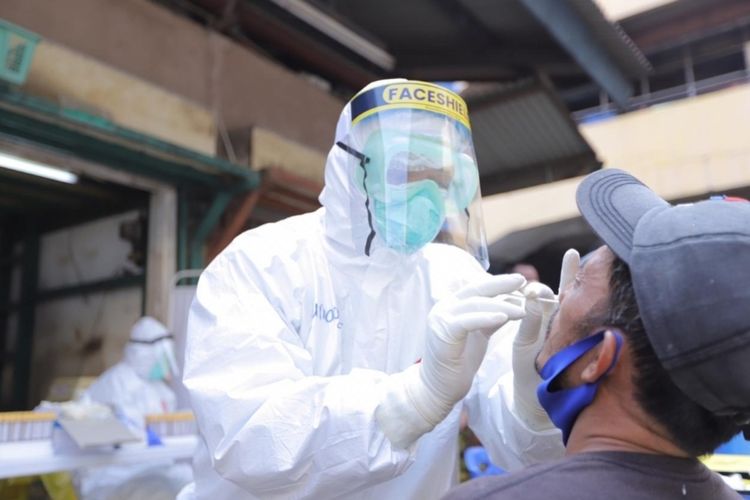Covid-19 Nasal Swab Test Caused Brain Fluid Leak in US Patient

WASHINGTON, KOMPAS.com – A Covid-19 nasal swab test on a US patient caused a brain fluid leak from her nose and putting her at risk of life-threatening infection, doctors reported in a medical journal Thursday.
The patient’s brain fluid leak is said to have been caused by a swab test that punctured the US woman’s brain lining.
The US patient is a woman in her 40s who had an undiagnosed rare condition and the test she received may have been carried out improperly, a sequence of improbable events that means the risk from a Covid-19 nasal swab test remains very low.
Read also: Indonesian Covid-19 Patient Recovers after 22 Swab Tests in Three Months
But her case showed health care professionals should take care to follow testing protocols closely, Jarrett Walsh, senior author of the paper that appeared in JAMA Otolaryngology–Head & Neck Surgery, told AFP.
People who've had extensive sinus or skull base surgery should consider requesting oral testing if available, he added.
"It underscores the necessity of adequate training of those performing the test and the need for vigilance after the test has been performed," added ear, nose and throat specialist Dennis Kraus of Lenox Hill Hospital in New York, who wasn't involved in the paper.
Walsh, who practices at the University of Iowa Hospital, said the woman had gone for a nasal test ahead of an elective hernia surgery, and afterward noticed clear fluid coming out of one side of her nose.
Read also: AstraZeneca Covid-19 Vaccine Under US Investigation Over Safety
She subsequently developed a headache, vomiting, neck stiffness, and aversion to light, and was transferred to Walsh's care.
"She had been swabbed previously for another procedure, same side, no problems at all. She feels like maybe the second swab was not using the best technique and that the entry was a little bit high," he said.
In fact, the woman had been treated years earlier for intracranial hypertension — meaning that the pressure from the cerebrospinal fluid that protects and nourishes the brain was too high.
Doctors at the time used a shunt to drain some of the fluid and the condition resolved.
But it caused her to develop what's called an encephalocele, or a defect at the base of the skull which made the brain's lining protrude into the nose where it was susceptible to rupture.
Read also: Donald Trump Tests Positive for Coronavirus, Begins Quarantine


































